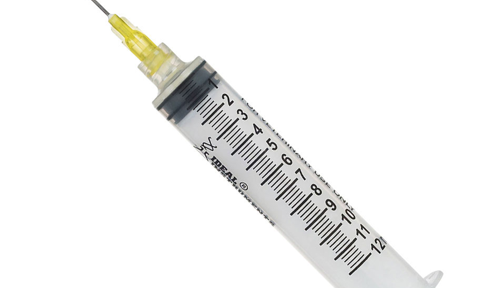By Serena Thompson
Bone crushing pain surges throughout her body. For Tisha Samuels this is a normal pain. Samuels is a victim of sickle cell disease. Sickle Cell affects up to 100,000 people a year mainly African Americans.
“It feels like someone is trying to break every bone in your body all at the same time. It depends on where it was at in your body. It affected my arms and legs making it hard to walk and even hard to breath,” Samuels said
Sickle Cell is a blood disorder that is caused by a gene mutation. It causes your red blood cells to form like crescents instead of forming full circles. It can clog blood vessels ,which blocks blood flow in you body. Leading to symptoms such as pain,fatigue,swelling of joints,etc.
Patients are given countless ways to treat their symptoms. One of the most effective ways is medication. Hydroxyurea is one of the very few medications used to treat sickle cell. Since hydroxyurea has been used to treat Sickle Cell pain crisis have gone down by 50%. Also its help increase the life expectancy. Dr. Martin Steinburg says, “We haven’t yet seen patients develop cancer or leukemia or have unexpected side effects. The second conclusion is that the data suggest. that these patients who take hydroxyurea have reduced mortality compared to the patients who didn’t take the drug. We’re excited and encouraged by the news,”
Recently scientists and researchers have been studying new ways to treat sickle cell. Fortunately for Samuels she’s been given the opportunity to participate in a clinical trial. More specifically gene therapy. Gene therapy has helped transform her life.
“I wanted to be able to give myself the life I’ve always dreamed of.I didn’t know how it would turn out but I’m glad I did it. Even if I did remain with sickle the research that went forth would help the future,” Samuels said.
Gene therapy is an experiment that alters the gene in your body that causes the disease. In sickle cell the HBB gene is altered. Doctors take the cells in the patient and replace the genes inside of the cells. Then put them back into their body.
“These therapies should work within a patient with SC disease. It’s always worth checking with the investigators who do that,” Dr. Ed Benz said.
For Samuels, gene therapy has changed her life in a big way. She continues to advocate for clinical trials in many ways.
“I’m excited about the advances that has been in sickle cell.On my social media accounts I’m always telling people my story. I’m advocating here just to let people know about clinical trials. There has been so much development since I was diagnosed, so there’s a lot of treatment out there, Samuels said.
Works Cited
Kuhn , Brooke. “Hydroxyurea Effective With Few Side Effects in the Sickest Sickle Cell Patients.” WebMd, 9 Dec. 1999, www.webmd.com/a-to-z-guides/news/20001209/hydroxyurea-effective-sickest-sickle-cell-patients#1.
Lapook, Jonathan. “Could Gene Therapy Cure Sickle Cell Anemia?” 60 Minutes , 10 Mar. 2019, www.cbsnews.com/news/could-gene-therapy-cure-sickle-cell-anemia-60-minutes/.
Norton, Amy. “Sickle Cell Gene Therapy Makes Another Advance.” WebMd, 4 Dec. 2018, www.webmd.com/a-to-z-guides/news/20181204/gene-therapy-for-sickle-cell-takes-another-step-forward#1.
Moore, Brit. “Researchers Inch Closer to Possible Cure for Sickle Cell Anemia.” CBS42, 12 Mar. 2019, www.cbs42.com/news/local/researchers-inch-closer-to-possible-cure-for-sickle-cell-anemia/1842071602.
“Sickle Cell Anemia .” Mayo Clinic , www.mayoclinic.org/diseases-conditions/sickle-cell-anemia/symptoms-causes/syc-20355876.
“Sickle Cell Disease.” Nhlbi, Nhlbi, www.nhlbi.nih.gov/health-topics/sickle-cell-disease.











